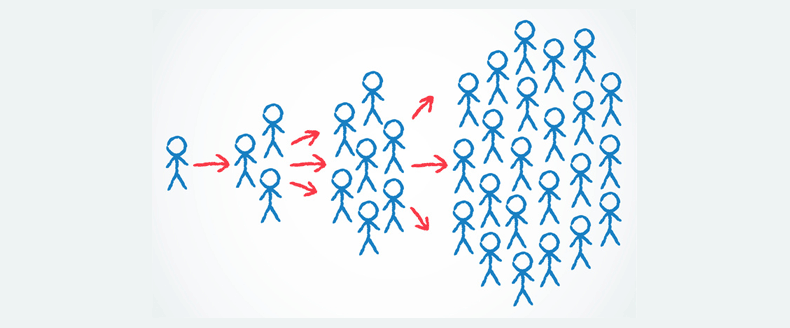New Epolitics.com contributor Ben Kaplan is the founder and CEO of PR Hacker. Read more on his blog.
Becoming The First Viral President: How Trump Won The Race To The White House
When Donald Trump sent a thunderbolt to the Democratic and Republican political establishment last Tuesday night, it was more than just a stunning political upset — it marked a fundamental shift in how political campaigns at every level will soon be fought and won.
So how did he do it? Why did a 70-year-old real estate tycoon with a quick Twitter finger become the poster boy for the most far-reaching viral political movement in modern U.S. history?
At my firm, PR Hacker, we know a thing or two about how to spread ideas in scrappy and surprising ways: we’re hired to help brands like Budweiser, Milk-Bone, Smucker’s and Del Monte create marketing content that can spread quickly and “go viral.”
Trump’s meteoric rise was built on the same new rules that govern our everyday work. Here’s how he did it:
1. Viral Emotions Triggered High Trump Voter Turnout
Viral emotions are the raw fuel of immediate and sustained action — whether that means sharing a social media post, persuading a friend over coffee, buying a red “Make America Great Again” hat or standing in a long line at a polling station.
By repeatedly activating emotions like anger and anxiety — which along with “awe” comprise a trifecta of the most powerful viral emotions — Trump was able to compel his supporters to flood the polls even without much logistical support.
Note that Trump wasn’t the first candidate to capitalize on a new communication channel: FDR’s Fireside Chats leveraged the sensory power of radio; JFK’s televised debates showcased his photogenic charisma; Obama’s use of social media gave voters new ways to interact and participate.
2. Negative News Strengthened Trump’s Position
Trump’s high frequency of controversial tweets and comments made him stronger in the aggregate because they usurped the news cycle while reminding voters that Trump is above all else a non-Establishment outsider (the key message of this nontraditional election cycle).
Again, it was because of his high emotional activation: Even when Trump’s individual controversies hurt him substantially (our data indicated that Trump’s video scandal had 20x more online chatter than the “Brangelina divorce”), the scandals didn’t pack a knockout punch because of the other message being communicated — that the billionaire populist is a political outsider who doesn’t talk like a politician.
This was the Clinton campaign’s missed viral opportunity: Instead of focusing the conversation on the video, their strategy dictated that Hillary should “play it safe” in the subsequent presidential debate and its aftermath. But the so-called “safe” option is rarely, if ever, the most viral one.
The result: Trump supporters dug in even deeper in their support of him (especially when the news cycle shifted back to Clinton) because they were already so emotionally invested in him and his political movement.
3. Message Simplicity Made Trump’s Ideas Stick
Consider the single most viral issue of the 2016 presidential campaign: Trump’s wall with Mexico. Not only could building a border wall be visualized by anyone in 5 seconds flat, but it also symbolized Trump’s tough stand on illegal immigration in a surprising way that would never be suggested by an ordinary politician.
Welcome to the new “5-second rule”: It doesn’t matter how brilliant your proposed plan may be if voters can’t pick it up and share it instantly.
Not only did Trump’s long life in the celebrity spotlight train him well on how to use sound bites to draw in media attention, but also his recent reality TV show experience helped him learn how to create dramatic storylines that captivate.
It’s no accident that for decades Trump has reportedly clipped newspaper articles by hand, written short quips on them in a black felt marker, and distributed these annotated musings by mail to friends and adversaries alike.
Trump was tweeting before there was Twitter.

